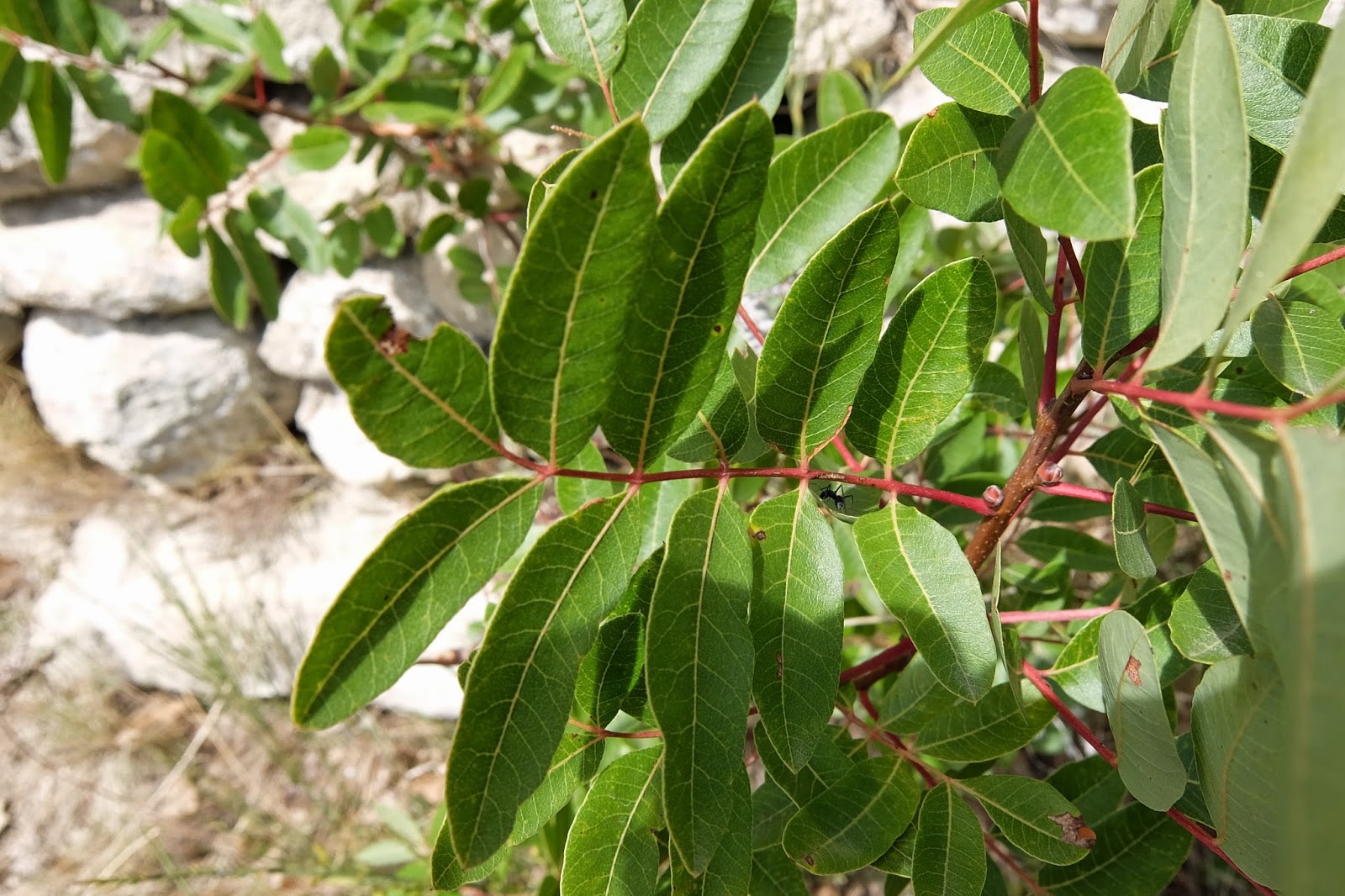Brazilian pepper tree
Faux poivrier à baies roses
Small, bushy evergreen tree or large shrub, native to South America but widely grown as an ornamental. It typically grows multi-stemmed trunks. It has naturalized and become invasive in the southern US, southern Europe, north Africa, southern Asia and Australia. The plant spreads easily by root suckers to form dense thickets. S. terebinthifolius resembles Pistacia lentiscus which is native to the Mediterranean, but P. lentiscus is paripinnate, having compound leaves with no terminal leaflet.
S. terebinthifolius is pinnately compound with 5 - 15 leaflets, with a terminal leaflet. They are oval lanceolate to elliptical, with finely toothed margins and yellowish veins. The leaf rachis is usually slightly winged but not always.
The fruit is a small spherical red drupe carried in dense clusters of berries. Dried drupes are often sold as pink peppercorns although it is not a true pepper.
 |
| Shrub form growing alongside a path above Lacoste, 9.22.14 |
 |
| Compound Leaf with terminal leaflet, 9.22.14 |
 |
| Berries, 9.22.14 |
 |
| More berries |
 |
| Compound leaf with yellow-veined leaflets |









































